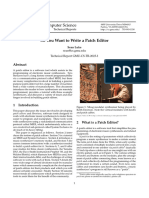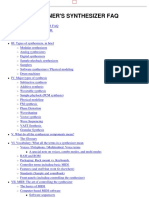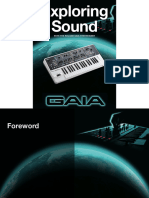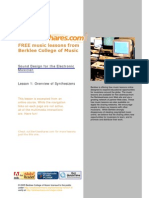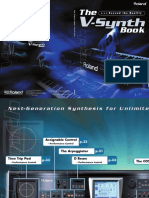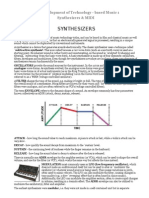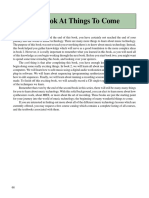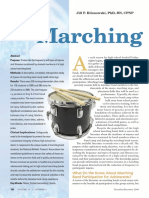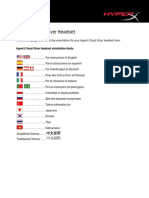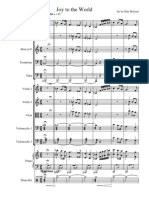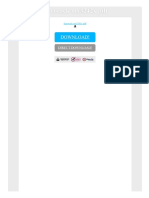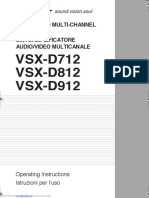0% found this document useful (0 votes)
145 views5 pages10 Patches & Programs
Some synthesizers use bank and number buttons or alpha dials to select patches, which allow the user to hear the synth's capabilities. Each synth produces sounds slightly differently, so no two synths can make exactly the same sounds. It is important to choose patches appropriately for the music being played. General MIDI synths organize patches in a standard way so songs will sound similar on different synths.
Uploaded by
Alex SantosCopyright
© © All Rights Reserved
We take content rights seriously. If you suspect this is your content, claim it here.
Available Formats
Download as PDF, TXT or read online on Scribd
0% found this document useful (0 votes)
145 views5 pages10 Patches & Programs
Some synthesizers use bank and number buttons or alpha dials to select patches, which allow the user to hear the synth's capabilities. Each synth produces sounds slightly differently, so no two synths can make exactly the same sounds. It is important to choose patches appropriately for the music being played. General MIDI synths organize patches in a standard way so songs will sound similar on different synths.
Uploaded by
Alex SantosCopyright
© © All Rights Reserved
We take content rights seriously. If you suspect this is your content, claim it here.
Available Formats
Download as PDF, TXT or read online on Scribd
/ 5




